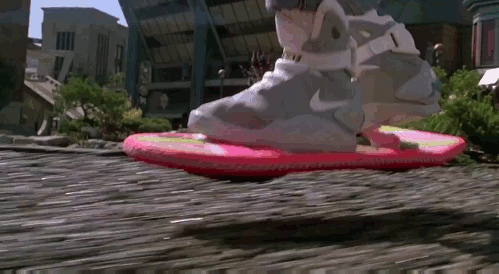Science-fiction movies often love to depict the future as some dark and ominous place in which most everything has gotten worse. (Great drama doesn’t quite lend itself to a setting where everybody lives in harmony and all the world’s problems have been solved.) But those seemingly far-off future dates can look awfully silly once we reach them in real life and realize: Hey, where are the (real) hoverboards?
Back to the Future Part II
Released in 1989, depicted 2015
Much was made this year, in 2015, that this Back to the Future sequel’s “future” section had finally arrived. And while the Chicago Cubs didn’t end up winning the World Series (as this movie jokingly predicted), Part II’s depiction of a society being overrun by technology isn’t that far-fetched. And while Part II doesn’t have the charm and novelty of the still-terrific first installment, this sequel has a blast doing loop-de-loops through the original’s timeline, rewriting certain events and offering new perspectives on others. As opposed to many movies set in the future, Part II is pretty optimistic: We can always alter what’s to come by doing good in the present. Damn, I think that’s just called … life.
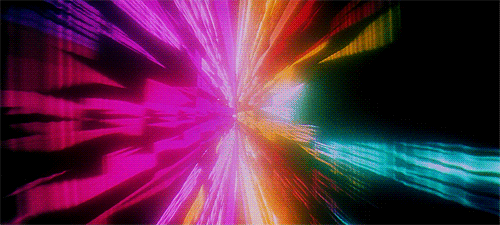
2001: A Space Odyssey
Released in 1968, depicted 2001
In truth, 2001 is actually set over a span of many, many years — the opening sequence takes place during “The Dawn of Man” — but the early-21st-century section remains far more futuristic than what we mere mortals have achieved. (No airline is doing manned flights to orbiting space stations.) Nonetheless, our society’s collective notion of the scary/exciting possibilities of “the future” are all wrapped up in director Stanley Kubrick’s landmark film. 2001 isn’t so much about a specific year, as it is a musing on where humanity is headed. That’s a journey that’s always ongoing, and as a result this most cerebral and exuberant of sci-fi movies — that “Blue Danube” sequence is still transcendent — never gets old.

Death Race 2000
Released in 1975, depicted 2000
“In the year 2000 hit and run driving is no longer a felony. It’s the national sport!” That was the tagline for the poster of this low-budget 1975 action film that was produced by B-movie legend Roger Corman and starred David Carradine and Sylvester Stallone. It’s the not-so-distant future, and a group of bloodthirsty drivers are zooming cross-country, earning points for pedestrians they run over — all for the entertainment of those watching at home. Death Race 2000 is a cheap-o, pretty fun satire of America’s hunger for spectacle. Sure, the future-tech cars all look dumb now, and the performances are pretty stiff, but there’s also a charm to the movie’s oh-so-edgy commentary. (To make things weirder: The film was remade in 2008 as Death Race. It’s set in 2012.)
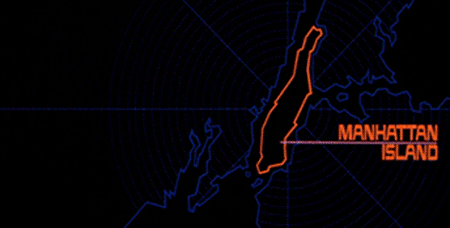
Escape From New York
Released in 1981, depicted 1997
Filmmaker John Carpenter was on quite a roll in the late 1970s and early 1980s between Halloween and The Thing. In between, he made this dystopian action movie about a badass former soldier named Snake (Kurt Russell) who is serving a life sentence on the island of Manhattan — which in 1997 is now a super-prison. Snake must rescue the president, who has been taken hostage in Manhattan, which requires him squaring off with Isaac Hayes’ cool-as-hell villain, The Duke. Escape From New York is vintage “look how terrible the world will be someday!” filmmaking, and, to be fair, parts of Manhattan do resemble this imagined dystopia.
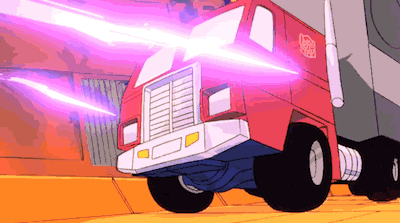
Transformers: The Movie
Released in 1986, depicted 2005
Long before Michael Bay got his hands on this Hasbro property, Transformers was a cheerful, diverting 1980s cartoon series. But Transformers: The Movie would bring Autobots and Decepticons to the big screen, setting its action in 2005 and killing off the series’ beloved hero, Optimus Prime. This animated film has an incredibly bizarre cross-section of celebrity voices — everybody from Leonard Nimoy to Judd Nelson to Orson Welles (in his final role!) — but even though it has a darker tone than the TV series, it’s far more fun and entertaining than Bay’s live-action abominations. The secret to its success: The Transformers: The Movie is actually more interested in the Transformers than in the human characters. (Miss you, Shia!)
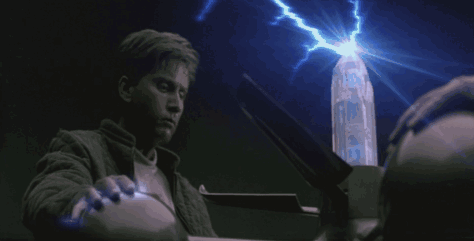
Freejack
Released in 1992, depicted 2009
As humanity inched closer to the end of the 1990s, there was a glut of pre-millennium movies that looked warily toward the dawn of a new century, consumed with fear that our lives would be cheapened by the encroachment of computers and technology. Freejack is probably the lamest of the bunch: It imagines a 2009 in which Emilio Estevez plays a race-car driver saved from certain death by a bounty hunter (Mick Jagger) who wants his body for a rich man whose own has stopped functioning, even though his conscience has been preserved. Co-starring Anthony Hopkins and Rene Russo, Freejack is sorta fascinating for the zeitgeist-y anxiety it tries to tap into, but you may also want to do pair it with something mindless — like paying bills or folding laundry — this delightfully dopey movie will keep you company in the background.
